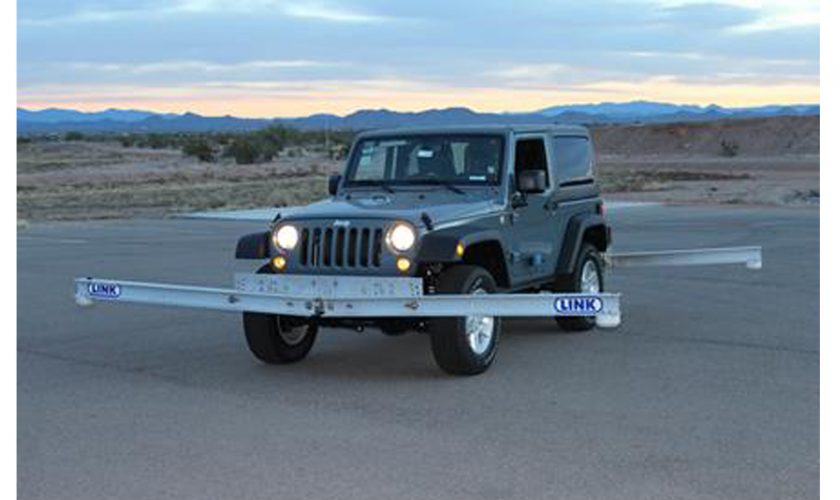
AAAA Vehicle Dynamics Testing leads to change in NCOP
Extensive testing conducted by the Australian Automotive Aftermarket Association (AAAA) in the United States earned Federal, State and Territory Government acceptance for modifications made under the owner certified section of the National Code of Practice covering alterations to a vehicle height.
The successful test regime on five popular vehicles using suspension kits from a range of Australian suppliers proved that minor modifications to vehicle height have no adverse impact on the operation of the Electronic Stability Control (ESC) unit.
AAAA adopted the same test used by all vehicle manufacturers and major component suppliers around the world to simulate vehicle dynamics for the development and testing of new chassis system components, engines, power trains, drivelines, suspension and vehicle electronic control systems.
Technical reports from the AAAA tests presented to Federal, State and Territory regulators showed the test vehicles all met Australian Design Rule (ADR) 35 requirements for ESC operation. Each modified vehicle had a 50mm – raised or lowered – modification to its suspension and was tested against an unmodified original vehicle.
AAAA Executive Director Stuart Charity said the industry program to dispel the notion that small changes to the ride height of a vehicle have a negative impact on ESC operation is a win for common sense. “Throughout this program, we worked closely with regulators nationally. Using ADRs as the performance benchmark, and using internationally recognised test procedures and testing facilities ensured complete transparency,” said Stuart Charity.
“As a result of this AAAA initiative, the National Code of Practice has been amended to remove reference to ESC testing requirements from Section LS of Vehicle Standards Bulletin (VSB) 14. We thank the Federal, State and Territory authorities for their input to this successful project.
“By securing a nationally approved self-certification process for minor vehicle modifications, we have eliminated the need for additional and redundant testing and cut the red tape burden on Australian businesses and vehicle owners.
“This is a great outcome for industries such as agriculture and mining that must modify vehicles to make them fit for purpose for special work duties. It is also more convenient and cost effective for private car owners who want to improve the off or on road capabilities of their vehicles,” said Stuart Charity.
Aftermarket displays due diligence
Stuart Charity said the modified vehicle ride height test program is a result of the AAAA commitment to due diligence in ensuring the engineering integrity of the products sold by its members. “This test regime for ESC compliance was an AAAA member led initiative,” he said.
“To learn how these issues were being addressed in other countries, we engaged with a range of international experts. Among them was the Specialty Equipment Market Association (SEMA) in the USA, which has established a vehicle dynamics program led by their Vehicle Technology Vice President John Waraniak who was invited to Australia in 2014 to present to the Australian regulators.
“AAAA then negotiated with the regulators on the range different vehicle types to be included in the test program. With a path forward identified, local aftermarket businesses contributed $120,000 to fund the testing program with the balance of the cost of the testing provided by the AAAA.
“We tested four vehicles in the USA and one in Australia, all fitted with Australian aftermarket suspension components,” he said.
Globally recognised independent organisations were employed to conduct the tests. Link Engineering in the USA tested a 2013 Camry, 2014 Toyota Land Cruiser 200 Series, 2015 Jeep Wrangler and Chevrolet SS (Commodore). Bosch tested a Ford PX Ranger in Australia. The final report was compiled by another independent USA organisation, Advanced Controls Engineering Consultants.
The Camry and Chevrolet SS were lowered 50mm, while the Land Cruiser, Wrangler and Ranger were raised by 50mm. No modifications were made to the vehicles’ original equipment ESC systems.
Tested according to regulations
All vehicles were tested in two configurations – the base OEM version and a vehicle modified in accordance with the Australian owner certified requirements under the National Code of Practice for Light Vehicle Modification – Vehicle Service Bulletin 14.
All five modified vehicles:
- Easily passed the performance requirements of ADR 35.
- Demonstrated compatibility with the control authority of the OEM electronic stability control system.
- Worked in harmony with the OEM ESC system to prevent any rollover potential in the extreme conditions of the tests.
- Did not demonstrate any “nuisance activations” of the ESC system during any test manoeuvres.
In most cases, the performances of the modified vehicles were in the same range and axis as the OEM version. This indicated that the modified vehicles demonstrated no deviations in the intended handling characteristics of the vehicle.
In some extreme instances the modified vehicles were actually more compliant with ADR 35 requirements than the base vehicles. As expected, the ESC systems on the raised vehicles engaged slightly earlier or more often and used slightly more brake pressure than the base models – due to their higher centre of gravity.
“However, in all cases the measurements recorded were well within the normal operating capabilities of the vehicles’ ESC systems and ADR 35 requirements,” said Stuart Charity.
“This study by independent testing authorities definitively demonstrates that a properly engineered kit for lowering or lifting vehicles by 50 mm will maintain compatibility with an OEM’s ESC system without tampering with the electronic controller.
“Such minor modifications meet the safety performance requirements of ADR 35. This AAAA member initiative now provides vehicle owners with the enhanced off or on road characteristics they want, while maintaining the original safety capabilities of their vehicles’ ESC system,” said Stuart Charity.
